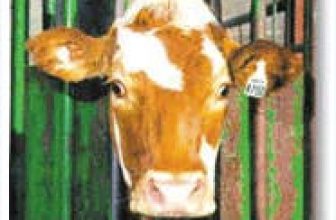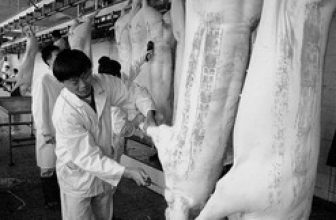
Australian farm tests RFID tag technology for sheep management
[ad_1]
A few days ago, the Victorian government of Australia selected six farms to implement RFID technology to investigate the economic benefits of sheep using RFID electronic tags. The Victorian Department of Primary Industries (DPI) used RFID technology to carry out an experiment in the cattle industry in 1999-the use of RFID technology to track cattle.
In 2003, the National Livestock Identification Program (NLIS) initiated the largest RFID application case in Australia-the use of RFID technology to track cattle. Now, in order to investigate the economic benefits of labeling sheep, DPI has set up six pilot areas on Victorian farms: Casterton, Ballarat, Benalla, Euroa and Swan Hill.
According to Tony Britt, manager of the DPI Animal Standards Association, RFID technology has greatly improved the traceability of cattle, which is essential to meet the needs of the international market. The NLIS program is a very mature system that keeps track records of approximately 25 million cattle every year. As for the application of RFID technology to the sheep breeding industry, DPI intends to start with a small-scale demonstration and rely on commercial power to promote it. For this reason, at a meeting held in 2005, someone introduced an identification system that combines visual and readable tags. The purpose is to hope that farmers can voluntarily use the electronic tags after seeing the commercial benefits brought by this technology.
Finally, DPI encourages farmers to use RFID electronic tags by increasing subsidies to sheep farmers. Each tag is subsidized at $1.35. In addition, hardware and software are also given a corresponding subsidy ratio. Britt said that these tags are universally applicable to farmers who want to apply RFID technology. As a result, the agency received five orders within a week. In addition, the agency also wants to provide farmers with independent and credible information about RFID technology, which will enable farmers to make better use of this technology.
Mike Stephens and Associates (MS&A), an Australian agricultural consulting company, will evaluate the RFID projects in the six pilot areas in the next three years, and then report the results to farmers. MS&A consultant Jim Shovelton said that Victoria first applied RFID technology to the cattle industry, and now the state is actively exploring the application of this technology to the sheep industry. However, before encouraging farmers to adopt this RFID tag technology, the consulting agency must also fully prove the huge economic benefits that the application of this technology can bring.
Shovelton said that Australian farmers traditionally like to manage a single herd, but using RFID tag technology to manage a single sheep will bring greater economic benefits. Because each sheep in the flock is different and must be managed individually, if only manual management is used, it is a waste of time and money. The situation will be very different after the use of RFID tags, because RFID tags can store the information of sheep’s weight gain or loss. With this information, the health of the sheep can be ascertained and corresponding countermeasures can be taken in time, such as when you learn about the sheep. After weight loss, you can feed more food.
According to Shovelton, the value of the best and worst wool in a particular flock can sometimes differ by $50. RFID technology can help farmers eliminate sheep that produce low-quality wool. After identifying the best and most valuable sheep, farmers can maximize production efficiency and profitability.
Shovelton said that another use of this RFID technology is to link lamb and ewe information to compare the pros and cons of different ewe offspring. However, it is very difficult to do it manually if you use manual work, because under normal circumstances the lamb will follow the ewe, so the record is very complicated and chaotic. After the lamb is tagged, it will be automatically identified when the lamb follows the ewe through the RFID reader. And identifying high-quality lambs will have obvious economic benefits: farmers can eliminate low-quality lambs, distribute feed appropriately and move labor to where they are most needed.
But Shovelton also said that the biggest obstacle to the implementation of this project is data management. Because this project will generate thousands of data, it is very time-consuming to manage, so RFID will not always be the most cost-effective solution, but Shovelton also admits that RFID technology is very important to determine the source of economic benefits for the industry .
According to Britt, DPI and MS&A have installed RFID equipment including RFID interrogators and readers on six commercial farms to test the performance of this technology under normal conditions. In addition, the passive HDX tags used by DPI have a working frequency of 134.2kHz, which complies with ISO 11784 and 11785 standards-the same as the previous tag standards used for cattle.
Britt expressed full confidence in the application of RFID technology. The current pilot project will last for 3 years. It is expected that there will be preliminary data on the economic benefits of RFID technology to these farms by the end of 2008. If the economic benefits brought by this technology can be proved by then, it may be possible to promote the voluntary application of this technology by the farm itself without the government’s encouragement and promotion.
[ad_2]





